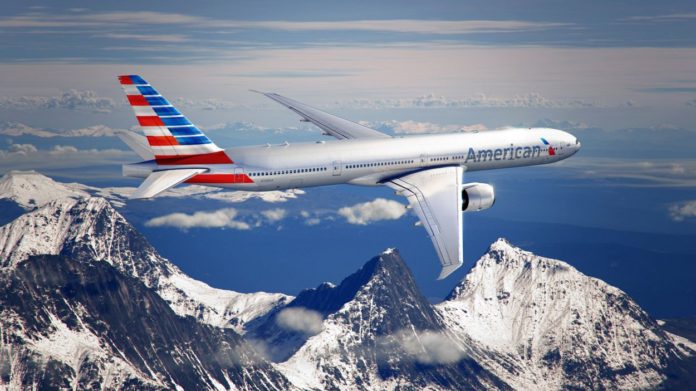DALLAS — U.S. airline shares are off to their worst start since 2011 amid concern that carriers are offering too many seats, chipping away at one of the industry’s most closely watched measures of sales.
Revenue from each seat flown a mile fell in the first quarter and probably will decline again in the coming three months, according to analysts including Julie Yates of Credit Suisse Group and UBS’s Darryl Genovesi. Some of those results may show up this week in airline traffic reports.
“It’s really easy for investors to extrapolate a little bit of negative through the whole year,” said Andrew Meister, an analyst at Thrivent Financial for Lutherans, which holds shares in each of the six largest U.S. airlines among $105 billion in assets. “Investors are hoping for a little capacity discipline and maybe some cutback in flight schedules. Things like that help shore up the revenue environment.”
Carriers don’t necessarily have to add flights to expand capacity. Some are squeezing more seats on each jet or swapping out small planes for bigger models. The risk is having a supply that outstrips demand and forces airlines to discount fares, a scenario that rekindles Wall Street memories of the industry’s losses last decade.
With a gain of 1.1 percent through Monday, the 11-carrier Bloomberg U.S. Airlines Index is poised for the slowest first quarter since an 8.7 percent drop in 2011. That contrasts with rallies of as much as 35 percent in the first months of the three previous years.
American Airlines Group’s shares were little changed for 2015, while United Continental Holdings Inc. rose 1.9 percent and Delta Air Lines Inc. declined 7.4 percent.
Airlines’ revenue weakness “is viewed as a harbinger of things to come,” Meister of Appleton, Wisconsin-based Thrivent said in a telephone interview.
Five of the six biggest U.S. carriers increased available seating in the first two months of 2015, with American the only holdout. JetBlue Airways Corp. grew the most at 11.5 percent, followed by Alaska Airlines’ 10 percent and Southwest Airlines Co.’s 7 percent.
“Demand is strong, but it’s just not strong enough to keep up with this level of capacity growth,” American President Scott Kirby said on March 3 at a JPMorgan Chase conference.
Airlines say rising competition from low-cost carriers has crimped pricing power in a few markets, including Dallas, Seattle and Chicago, and contributed to some of the decline in the revenue gauge, also known as unit revenue. Domestic coach fares averaged $439.70 in February, down 4.1 percent from a year earlier, according to data compiled by Bloomberg. Premium tickets fell even more, dropping 5.1 percent.
The 45 percent plunge in jet kerosene in the past 12 months is cushioning any blow to profits. First-quarter earnings are projected to rise from a year earlier at all of the six large carriers, based on analysts’ estimates compiled by Bloomberg.
“The price of oil has gone down considerably, and will more than offset any pullback in terms of price to the consumer or even the fact that airlines may expand,” said Robert S. Bacarella, chairman and co-founder of Monetta Financial Services Inc. in Wheaton, Illinois. Monetta owns shares of Delta and Southwest.
Airline shares have found favor with investors this decade after $58 billion in losses in the nine years ended in 2009, buoyed by mergers, fuel, a resurgent U.S. economy and a break from their former practice of chasing market share even if it meant adding unprofitable flights. The index surged more than fourfold from 2012 through 2014.
“I feel really good,” said Andrew Davis, an analyst at Baltimore-based T. Rowe Price Group, the largest investor in American and second biggest in United. “Free cash flow is going to let them pay down debt, buy back shares and increase dividends.”
Current stock prices reflect the industry’s shift to stability after a history of fragmentation and financial weakness, said Jim Corridore, a Standard & Poor’s Capital IQ analyst in New York. “Now what we need to see is continued momentum in passenger traffic, yield and profits.”
Analysts and investors watching for a tipping point in the industry’s rally say airlines may need to prove their discipline by retrenching on growth plans later this year.
“It’s real easy when demand is strong to say you’re going to grow capacity less than demand grows,” Thrivent’s Meister said. “If demand is flat, will they cut capacity? That will be the acid test to see if the industry has changed its stripes.”






